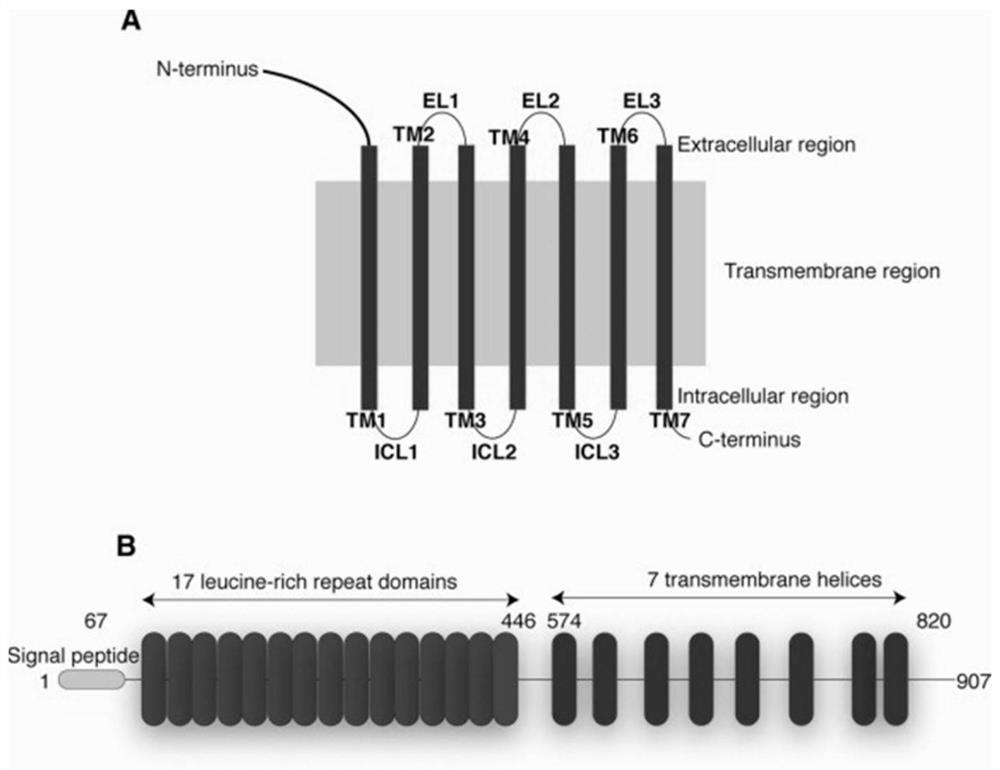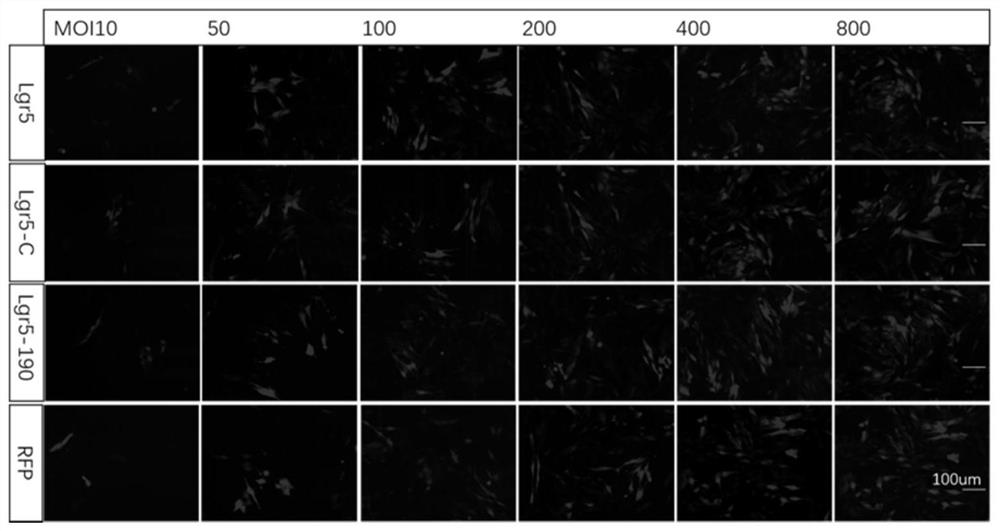Application of Lgr5 gene in protection of inner ear hair cells and promotion of support cell regeneration
A technology of inner ear hair cells and supporting cells, applied in epidermal cells/skin cells, applications, animal cells, etc., can solve the problems of low regeneration efficiency and unclear molecular mechanism.
- Summary
- Abstract
- Description
- Claims
- Application Information
AI Technical Summary
Problems solved by technology
Method used
Image
Examples
Embodiment Construction
[0033] The adenoviruses of Lgr5, Lgr5-C, Lgr5-190 and RFP (control) used in the present invention were all directly purchased from Hanbio, and all viruses had red fluorescence.
[0034] Among them, the nucleotide sequence information of Lgr5, Lgr5-C and Lgr5-190 are described in SEQ NO.1, SEQ NO.2 and SEQ NO.3 respectively.
[0035] SEQ NO.1:
[0036] ATGGACACCTCCTGCGTCCACATGCTCCTGTCCTTGCTGGCGCTGCTGCAGTTGGTGGC CGCCGGCAGCTCACCGGGACCAGATGCGATACCGCGGGGCTGCCCATCACACTGTCAC TGTGAGCTGGATGGCAGGATGCTGCTCAGGGTGGACTGCTCGGACCTGGGGCTCTCGG AGCTGCCCTCCAACCTCAGCGTCTTCACCTCCTACCTGGACCTCAGTATGAACAACATC AGTCAGCTACCCGCCAGTCTCCTACATCGCCTCTGCTTCCTAGAAGAGTTACGTCTTGCTGGAAATGCTTTGACACACATTCCCAAGGGAGCGTTCACGGGCCTTCACAGCCTCAAA GTGCTTATGCTGCAGAACAACCAGCTGAGACAGGTTCCGGAGGAAGCGCTACAGAAT TTGAGAAGCCTTCAATCCCTGCGCCTAGATGCCAACCACATCAGCTACGTGCCACCCA GCTGTTTCAGCGGCCTGCACTCCCTGAGGCACCTGTGGCTAGATGACAATGCTCTCAC AGACGTCCCTGTCCAGGCTTTCAGAAGTTTATCAGCCCTGCAAGCCATGACCTTGGCC CTGAACAAAATACACCACATAGCAGACTACGCCTTTGGAAACCTCTC...
PUM
 Login to View More
Login to View More Abstract
Description
Claims
Application Information
 Login to View More
Login to View More - R&D
- Intellectual Property
- Life Sciences
- Materials
- Tech Scout
- Unparalleled Data Quality
- Higher Quality Content
- 60% Fewer Hallucinations
Browse by: Latest US Patents, China's latest patents, Technical Efficacy Thesaurus, Application Domain, Technology Topic, Popular Technical Reports.
© 2025 PatSnap. All rights reserved.Legal|Privacy policy|Modern Slavery Act Transparency Statement|Sitemap|About US| Contact US: help@patsnap.com



